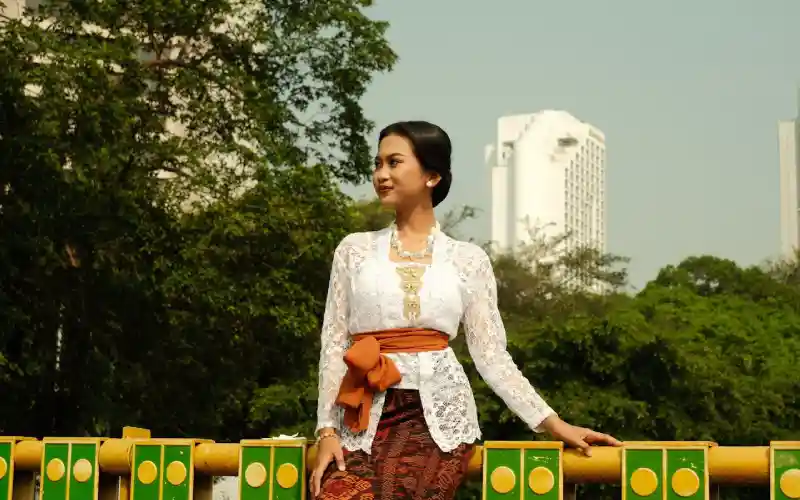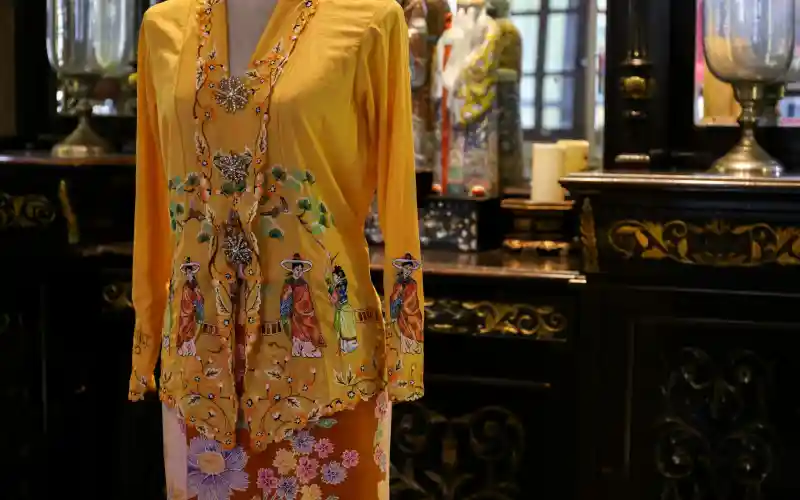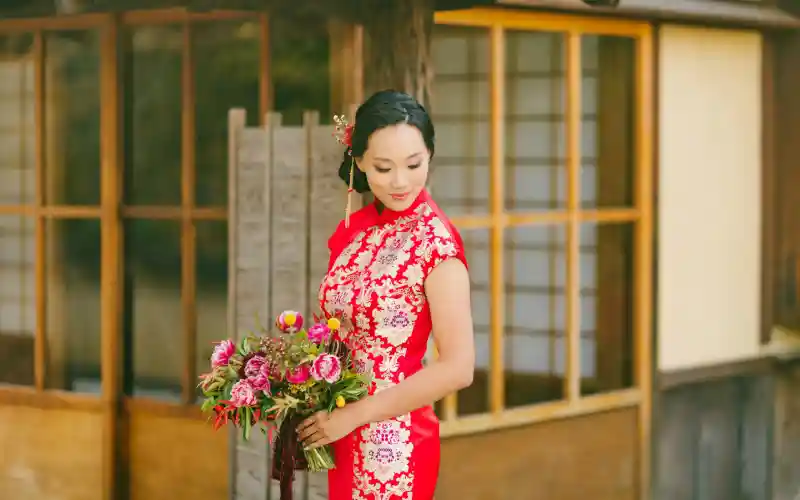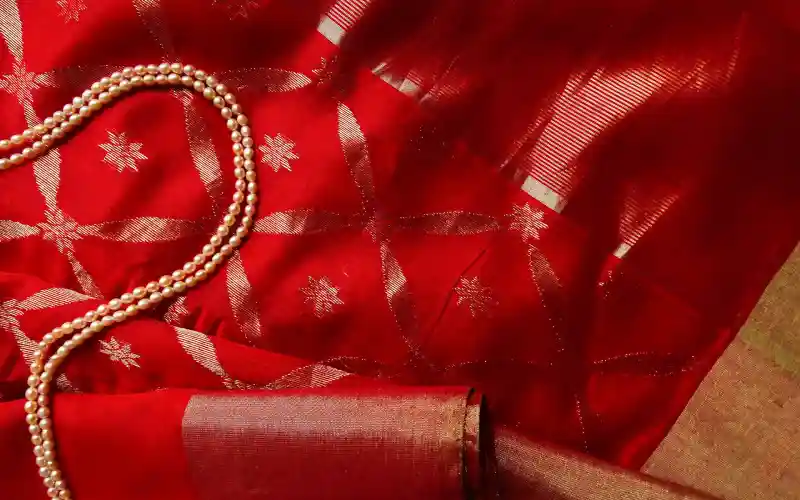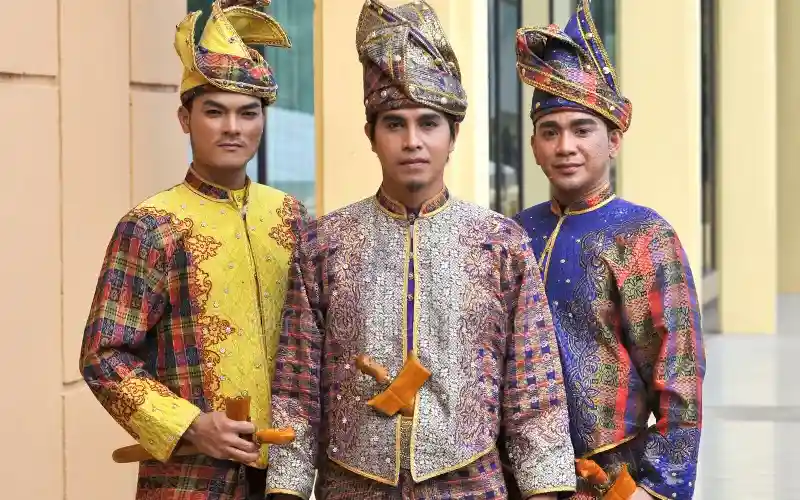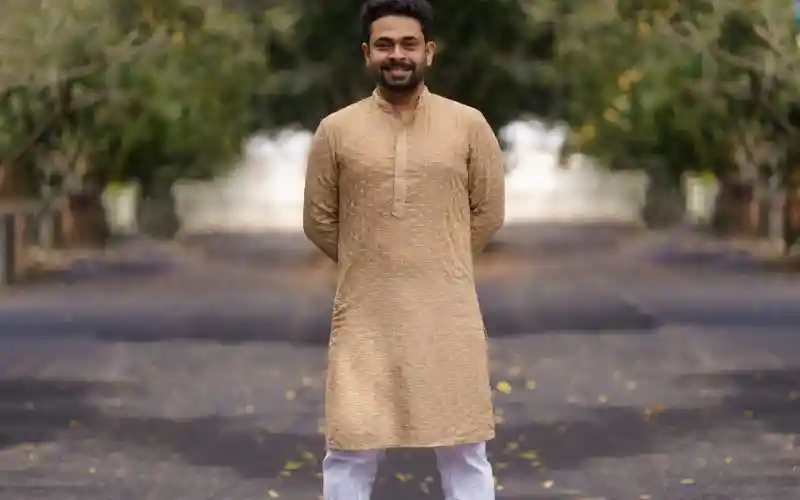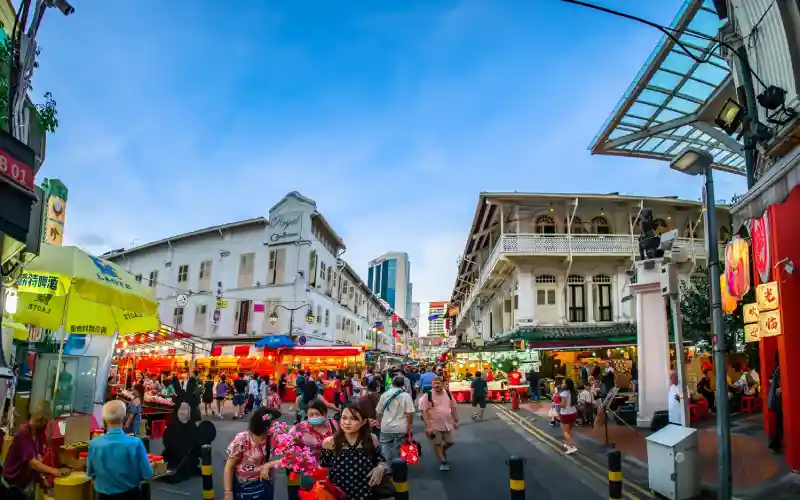Singapore is the perfect reflection of a modern city of the 21st century. Be it the architecture, the lifestyle, the technology, or the way people dress, everything in Singapore mirrors the contemporary times. But despite all this, culture remains at the root of the country. Singapore is a multi-cultural society, with Malays, Chinese, Indians, Peranakans, and Eurasians thriving her together, and you will see the influence of all these communities in the culture of the society. The influence is not limited to customs, rituals, and food, but also to clothing. While Singaporeans have adopted the western style of dressing for their day-to-day life, the traditional attire is still preserved. Here is a detailed guide regarding the Singapore traditional dress for both men and women.
Singapore Traditional Dress for Women
Here you will find traditional costumes for females in all the communities and cultures of Singapore.
Baju Kurung
A Singapore costume female is Baju Kurung, belonging to the Malay community. The Banju Kurung is a two-piece outfit with a long-sleeved tunic-style top paired with a long skirt or a sarong. Traditionally, it is a loose-fit outfit that is usually made in cotton, although you will find it in fabrics like lace, silk, chiffon, and more. There are two variations of the Baju Kurung: Baju Kurung Teluk Belanga and Baju Kurung Cekak Musak. The difference between these two outfits is that the latter has a collar and the former doesn’t. Baju Kurung is usually worn for formal events, weddings, and festivals.
Kebaya
Kebaya is another traditional outfit with Malay and Penarkan influence. This too is a two-piece outfit, although its cut and style are different from Baju Kurung. The upper part of the Kebaya is a fitted blouse with a front opening. The lower garment is a batik skirt or a sarong. This outfit is made with lightweight fabrics like cotton, voile, brocade, lace, or gauze. The Kebaya is worn both for formal and celebratory events. The Kebaya is also the uniform of the female cabin crew of Singapore Airlines.
Cheongsam
Cheongsam or Qipao is a Chinese traditional outfit for women. Similar to a gown, Cheongsam is a long outfit, usually form-fitting with a high cylindrical collar and side slits. The sleeves of the outfit can be either short or long. The neckline of the outfit is closed, and it has an asymmetrical opening that runs from the center of the collar to the side of one of the armpits. It is fastened either by loops or knotted buttons. Although traditionally it is made of silk, you will find the Cheongsam with different kinds of fabrics like cotton. The Chinese women usually wear the Cheongsam for formal events and special occasions like weddings.
Saree
The saree is an Indian traditional outfit for women, which can be described as a 5-9-yard-long fabric pleated around the waist and thrown across the shoulder freely or with more pleats. The saree is worn with a blouse and a petticoat/underskirt. The saree is the most versatile Indian outfit, as it can be draped in different styles as per one’s preference or comfort level. The blouses too come in a wide variety of designs and patterns. Sarees are available in different types of fabrics like cotton, silk, chiffon, georgette, etc., by Indian women in Singapore during festivals like Diwali and weddings.
Singapore Traditional Dress for Men
Just like the traditional dress for women, Singapore traditional dress for male also comes from its different cultures and communities.
Baju Melayu
Image Credit : dreamstime.com
Baju Melayu is the male counterpart of the Baju Kurung. It is the traditional outfit of the Malays and is usually worn during special occasions and formal events. The Baju Melayu includes a loose shirt with a stiff collar and long sleeves. This is paired with long pants. What makes it different from the regular shirt and trousers is that it includes a Kain Songket, Tenun Pahang Diraja, or a sarong that is tied at the waist. This cloth usually reaches the knee level. Men also wear a songkok or a tengklok (different types of head gear) with this Singapore attire.
Changshan
The traditional attire of the Singapore Chinese, Changshan is a long gown worn by men. Just like its female counterpart, the Changshan is a long robe with a high collar, side slits, and knotted buttons. But while the Cheongsam is tight fit, this has a straight cut. Traditionally, the Changshan is made of silk or satin fabric and may also have embroidery of different types of designs, dragons, auspicious patterns, and more. The Changshan is the attire of the groom in Chinese weddings. Sometimes, a vest or a Mandarin jacket is worn over the Changshan.
Kurta Pajama and Sherwani
The kurta pajama and sherwani are traditional attires for Indian men in Singapore. The kurta pajama includes a long ankle or knee-length tunic that is paired with loose trousers. The simple ones are usually made of cotton or linen while the festive ones are made of silk. Kurtas come in different varieties, including plain, embroidery, and decorative patterns. Kurta pajamas are usually worn during festivals and weddings. A sherwani is a more regal and opulent version of the kurta pajama. It is a long, coat-like garment that is worn with a churidar or a pajama. It has rich work on it, including stonework, embroidery, and Zari work. Men may or may not wear a dupatta or scarf with it. A Sherwani is the most common attire for grooms in North Indian weddings.
Modern Adaptations of Singapore Attire
All the ethnic communities in Singapore have tried their best to preserve their culture through their traditional attire. However, with the changing times, these costumes have also evolved, accommodating the growing trends and the expectations of the younger generation. Today’s contemporary designers have tried to transform the Singapore traditional costumes to something more modern and practical. They have introduced new cuts, different fabrics, and unique designs. Alterations have been made to sizes, adding bold prints, and giving the outfits a modern silhouette.
For instance, Kebaya and Baju Kurung are available in bold prints, asymmetrical cuts, etc., to give it a modern touch. Another way where Singaporean designers have added a modern touch is by pairing kebaya with a skirt. You can also see women, especially young girls, wearing saree with a crop top. It has become a common trend to add contemporary patterns to traditional outfits and wear them with fusion accessories. Due to these changes, several people have started wearing these traditional outfits as their daily wear, even in corporate offices.
Experience Singapore’s Culture Through Traditional Attire
As a tourist if you want to explore the culture of Singapore, you can do so through traditional attire. There are multiple ways in which you can learn and experience the multicultural fashion heritage of the country.
- Cultural Festivals: The local Singaporeans prefer to wear their traditional attire during their cultural festivals. You will get to wear Baju Kurung or Baju Melaya during Hari Raya Aidlifitri; sarees, salwar kameez, lehenga, and kurta pajamas during Diwali, and Cheongsams, Changshans, and Tang suits during Chinese New Year.
- Cultural Museums: If you want to dig deeper into the evolution of Singaporean traditional costumes, a visit to the cultural museums are a must. The Asian Civilization Museum and the Peranakan Museum are perfect for this purpose. Here, you will not only get to see different types of attire but also get to know about history, cultural significance, craftmanship, fabrics, and more.
- Heritage Tours and Workshops: Apart from the Singapore tour packages for sightseeing, there are also heritage tours that will give you an insight into traditional clothing as well. These tours happen in the ethnic pockets of Singapore like Little India, Chinatown, Kampong Glam, etc. You will get to see demonstrations of traditional clothing and crafts. Similarly, you can also participate in workshops where you can learn beading, embroidery, and batik painting.
- Cultural Photoshoots: Several photo studios and rental shops in Singapore offer cultural photoshoots. This involves taking professional photographs wearing the traditional outfits of the country. You can choose the outfit that you like the most and get your photos clicked against heritage backdrops like Singapore River, temples, etc. This would be a great keepsake as well as special experience as well.
.jpg) Featured
Featured 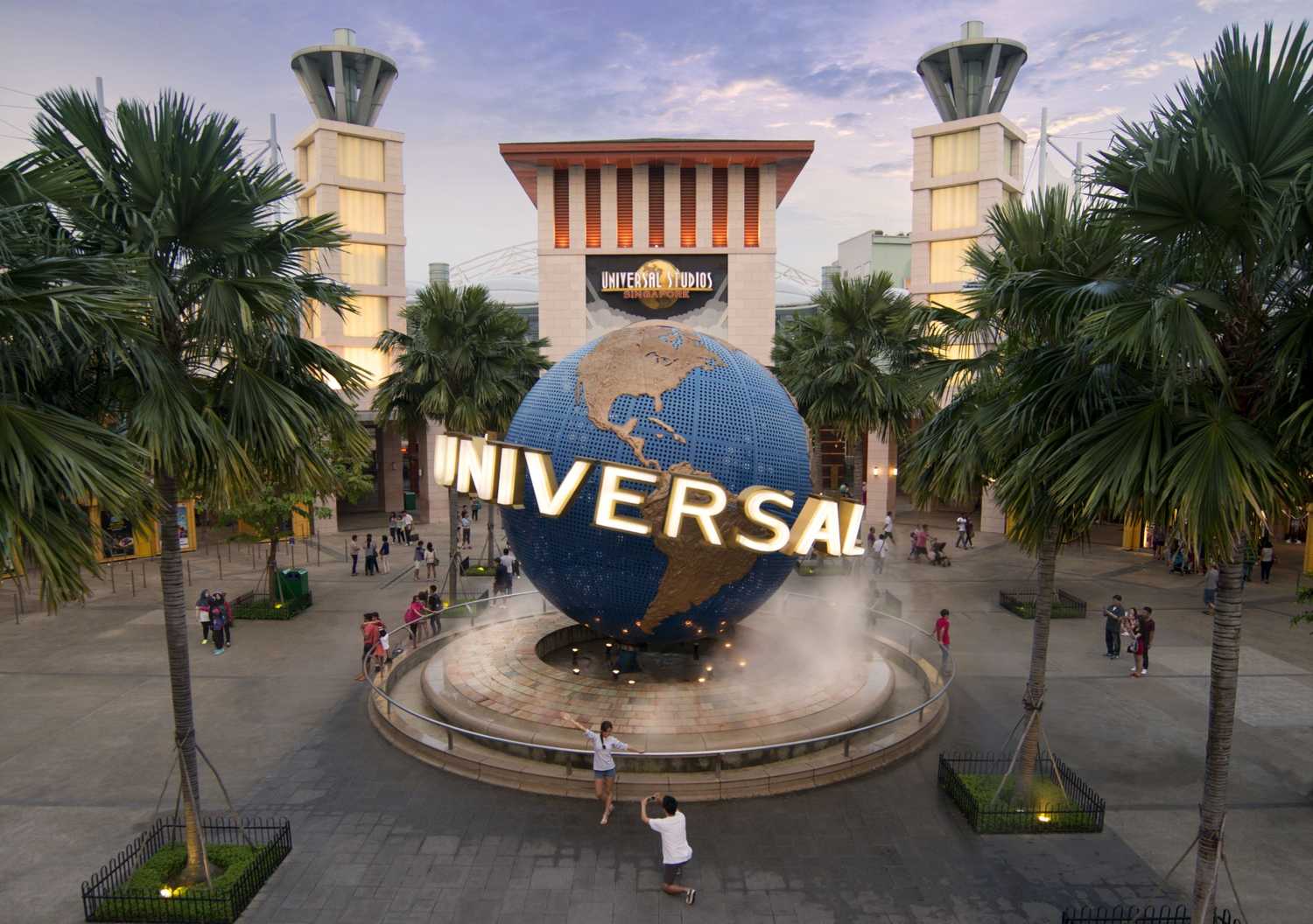 Featured
Featured Where to Buy Traditional Singapore Costumes
- The best place to buy traditional Singapore costumes is in the ethnic neighborhoods of the country. Little India, Chinatown, Kampong Glam are filled with local boutiques and stores where you can get these outfits. You can get these outfits stitched or purchase readymade ones.
- The shopping malls in Singapore also have specialty stores that stock on traditional outfits.
- You can also check out the online stores where you can get these classic outfits.
- If you are not keen on buying these outfits but still want to wear them for a special occasion, you can get them through rental shops.
Conclusion
The ethnic costumes of Singapore are an integral part of the culture. Getting to know them is one of the best ways to understand the different cultures and heritage of this Southeast Asian nation.
Frequently Asked Questions


